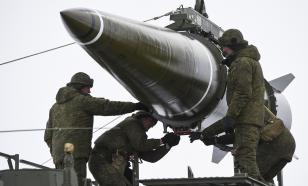British troops withdraw from 'bandit country'
A 37-year mission to keep watch over the Irish Republican Army's most dangerous power base of the U.K. has ended Monday, as the final British troops withdrew Monday from the South Armagh borderland of Northern Ireland.
Soldiers from the second battalion of Princess of Wales's Royal Regiment departed Bessbrook Mill in what their commander, Col. Wayne Harber, called a final act in "the longest military campaign in the army's history."
"We are pleased to be going and that the peace process is progressing. Soldiers know the importance of peace more than anybody else," said Harber, who noted that many soldiers also felt nostalgic about leaving a post many had learned to loathe.
Since the early 1970s Bessbrook Mill has been the launching pad for helicopter-borne operations throughout South Armagh, a predominantly Catholic region midway between Belfast and Dublin long known as "bandit country."
The official closure of Bessbrook Mill, for decades the busiest heliport in Europe, reflects the dramatically changed security fortunes in Northern Ireland.
The outlawed IRA, long committed to forcing Northern Ireland out of the United Kingdom, officially quit in 2005 and surrendered its largely Libyan-supplied stocks of weaponry. Britain, in turn, launched a program to cut its Northern Ireland military garrison back to a "peacetime" level of 5,000 by the end of July 2007.
The central goal of the Good Friday peace accord of 1998 - a joint Catholic-Protestant administration that includes the IRA-linked Sinn Fein party - was revived in May and has been operating harmoniously.
During the early years of the IRA campaign, South Armagh was the closest place that the IRA had to a home field. Of the 763 British military personnel killed in Northern Ireland from 1971 to 1997, South Armagh claimed 108, while the British rarely captured or killed members of the IRA's South Armagh unit in exchange.
British troops surrendered South Armagh's roads to the IRA because of bombs hidden in hedges and drainage ditches. Soldiers on foot patrol faced grave dangers because of booby traps and snipers. The army turned exclusively to helicopters to position troops in a network of village forts and 13 hilltop surveillance towers.
The last of those towers was torn down last year. The British army's last helicopter flight from Bessbrook occurred Friday.
The IRA launched only one accurate attack on Bessbrook Mill itself, an April 1987 mortar strike that injured three soldiers in the base's parking lot. The IRA killed its last soldier in Bessbrook in February 1997, when a sniper shot a soldier through the neck as he chatted to a villager at a road checkpoint.
Sinn Fein's senior politician in South Armagh, Conor Murphy, said the British retreat from Bessbrook Mill was "obviously welcome news for the community of South Armagh, who have had to live under British military occupation."
But Sinn Fein's moderate rival for Catholic votes, the Social Democratic and Labour Party, or SDLP, noted that decades of IRA attacks had encouraged the British military only to dig in - and it took IRA cease-fires and political compromise to get them out.
"At times it was difficult to imagine the day when they would leave, but I am glad that day has arrived," said SDLP lawmaker and Bessbrook native Dominic Bradley, who recalled boyhood memories of the moment when troops arrived in the village to begin converting its 19th-century stone mill into a fortress.
"At the end of the day their departure was brought about by peaceful, democratic politics and not by the use of violence, which at all times did nothing more than lengthen the duration of their stay," Bradley said.
Subscribe to Pravda.Ru Telegram channel, Facebook, RSS!


